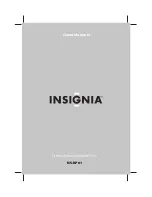
7
Parts & Service: 020 8988 7400 / E-mail: [email protected] or [email protected]
Examples of conducting objects include, but are not limited to, buildings,
electrical tools, work benches, welding power source cases, workpieces, etc.
Never touch the electrode and any metal object unless the welding power
source is off. When installing, connect the frames of each unit such as welding
power source, control, work table, and water circulator to the building earth.
Conductors must be adequate to carry earth currents safely. Equipment
made electrically LIVE by stray current may shock, possibly fatally. Do not
EARTH to electrical conduit, or to a pipe carrying ANY gas or a flammable
liquid such as oil or fuel.
2) TORCH
A fully insulated torch should be used without protruding screws or other
damage.
3) CONNECTORS
Fully insulated lock-type connectors should be used to join welding cable.
4) CABLES
Frequently inspect cables for wear, cracks and damage. IMMEDIATELY
REPLACE those with excessively worn or damaged insulation to avoid possibly
lethal shock from bared cable. Cables with damaged areas may be taped to
give resistance equivalent to original cable. Keep cable dry, free of oil and
grease and protected from hot metal and sparks.
5) TERMINALS AND OTHER EXPOSED PARTS
Terminals and other exposed parts of electrical units should have insulating
covers secured before operation.
6) SAFETY DEVICES
Safety devices such as interlocks and circuit breakers should not be
disconnected or shunted out. Before installation, inspection, or service of
equipment, shut OFF all power and remove line fuses (or lock or red-tag
switches) to prevent accidental turning ON of power. Do not open power
circuit or change polarity while welding. If, in an emergency, it must be
disconnected, guard against shock burns, or flash from switch arcing. Always
shut OFF and disconnect all power to equipment. A power disconnect switch
must be available near the welding power source.
Содержание 6014505
Страница 32: ......








































